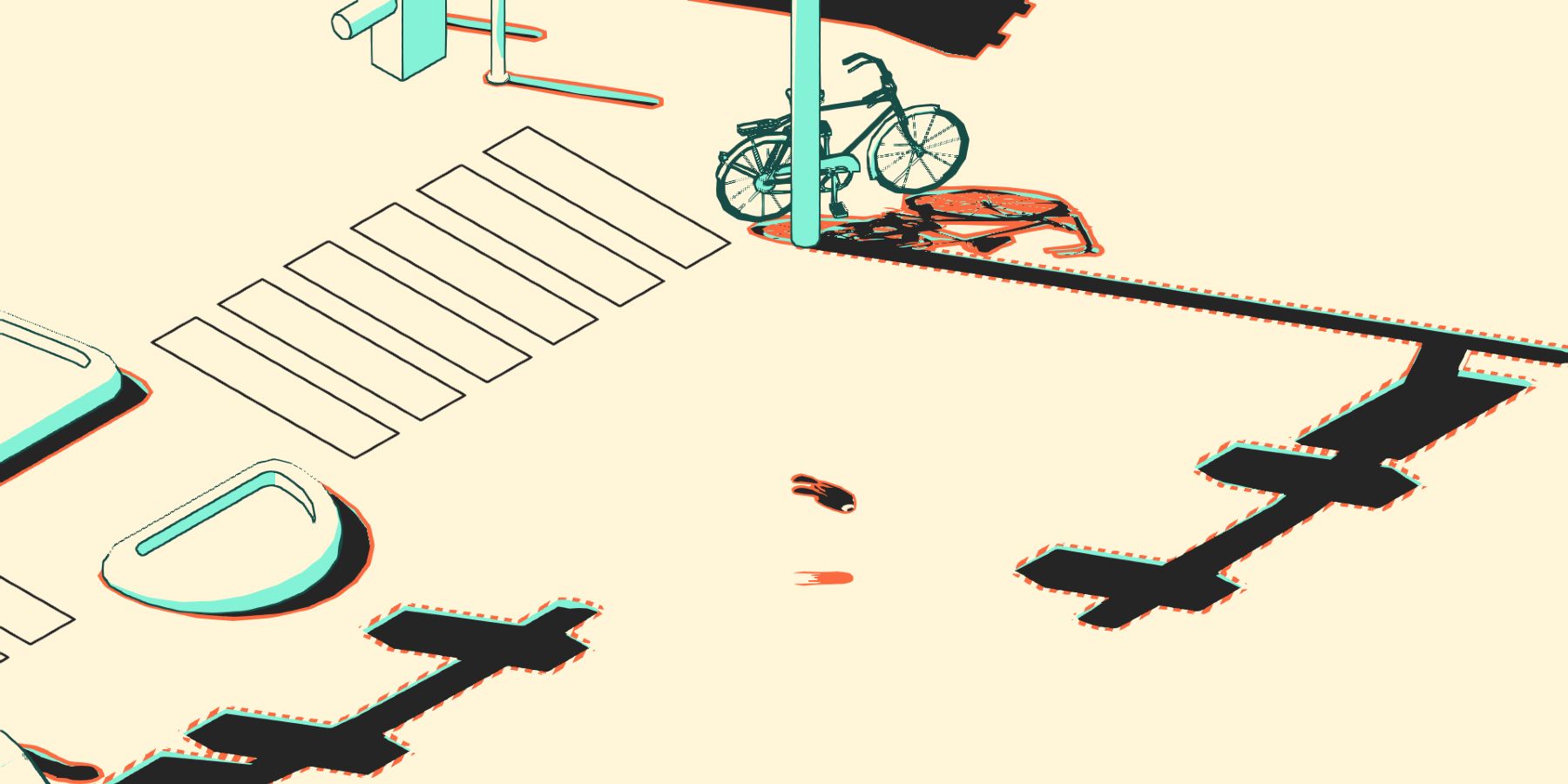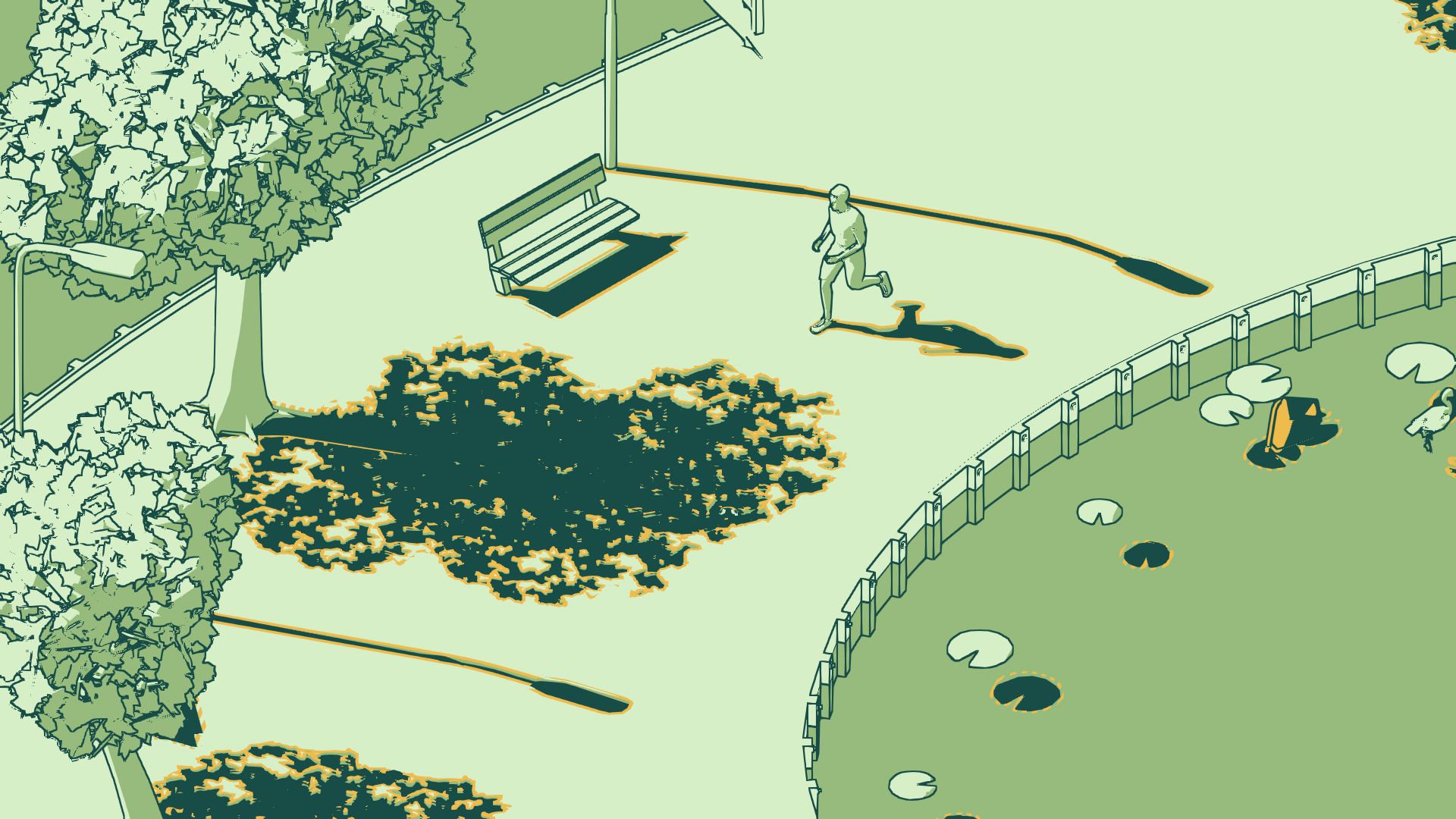School can be a safe place to test out ideas for video games, often without the pressures of meeting demand on major AAA pipelines. Some teams come out of game design programs, such as the original Coffee Stain Studios working on Sanctum. Other games are the result of an individual's ambition, like Stephen Ddungo working on Sword of Symphony as a final University project. Ewoud van der Werf began working on SCHiM as an exam project in February 2020, and it has since grown into a much bigger endeavor.
Described as "a game about jumping through shadows in a beautiful abstract world," SCHiM aspires to be like artsy indie games van der Werf enjoys; including Journey and Gris. However, one detail onlookers should immediately notice is its use of four colors per-level, a conceit meant to work around its creator's colorblindness. Game Rant spoke to van der Werf about SCHiM's history and how its visual design has evolved.
SCHiM: From School Project to Full-Fledged Experience
SCHiM is not the first game van der Werf has developed. In high school he got a head start working on mobile games — though he feels they aren't particularly interesting to discuss. "They were an important way for me to get started," he said. "Now I'm creating the sort of games I like to make." He studied game design at Leeuwarden's Friesland College in the Netherlands, choosing to follow the development track rather than the art track despite having an interest in both.
While taking classes he met Nils Slijkerman, co-founder of indie studio Extra Nice who taught courses in game design at Friesland. Slijkerman introduced van der Werf to the studio where he would later start an internship; helping Extra Nice with its 2D hack-and-slash title Skirmish and later getting free rein to work on SCHiM as part of an exam he reached at a fast-tracked rate. While Slijkerman would begin to spend more time on SCHiM after seeing its potential, van der Werf said it's primarily a solo venture.
"I just like to do a lot of different things in terms of art, modeling, programming, coming up with ideas, concepting. I do that a lot by myself, I think that makes me more indie."
The idea of a platformer where players jump between shadows, one with a minimalist art style inspired by "ligne claire" (clear line) art such as George Remi's The Adventures of Tintin or that of Dutch illustrator Joost Swarte, was what van der Werf originally had in mind. The first version of SCHiM caught enough attention online that the scope was expanded to a full-fledged game as opposed to a series of small levels meant to push him toward graduation. Though van der Werf says it hasn't "gotten out of hand," there's more of a focus on backstory, collectibles, and exploration.
SCHiM's Style Changes and Accessibility
SCHiM began with mechanics and art style in mind, only after that was established did they really begin to develop a world. The game's namesake, Schim, are shadowy spirits inhibiting every person and animal that are inspired by Japanese tsukumogami. These spirits take on their own kind of folklore, in which they should "never be separate from their objects" — presenting the player's goal of reconnecting the main character to his Schim. However, the core of the title is capturing a more universal experience.
"I think what makes SCHiM resonate with a lot of people is it's like childhood play. Stepping on certain cracks in the pavement, or certain tiles, where lines start crossing. That's where it really stems from."
While that inception is still present via SCHiM's minimalist style, van der Werf said the technique used to represent it has evolved. Originally it used a "cheap effect" of silhouette outlines with hull-type shaders he compared to Jet Set Radio. Off of that learning experience he's moved on to using post-processing effects on outlines whose details vary with experimentation. For SCHiM's rendering style, van der Werf said "some recent indie games that use the same kind of art style would be Sable or Manifold Garden."
The game was originally going to feature just four colors for its duration, helping van der Werf work around difficulty distinguishing colors like blues by taking any potential clashes out of the equation. After receiving feedback that this made the game "very bright or annoying" to look at, that scope also expanded to being a different four-color palette in each level. "It was very important to me that if I input a color it's exactly that color, regardless of lighting, with no blending."
Every palette should be nice for everyone to look at, van der Werf said, and though there aren't other accessibility options thought up yet, he hopes SCHiM's casual "pick it up and play" nature helps the game appeal to all. SCHiM's official website includes a feature to test endless variations of four-color palettes, and while the game itself currently uses set palettes he has considered adding in the player selection tool as an Easter egg "if it's not too much work." Anyone curious to see SCHiM's style in action can expect a demo at the WASD expo in London, England from April 7 to 9, 2022.
SCHiM is currently in development for PC, PS4, PS5, Switch, and Xbox One.


